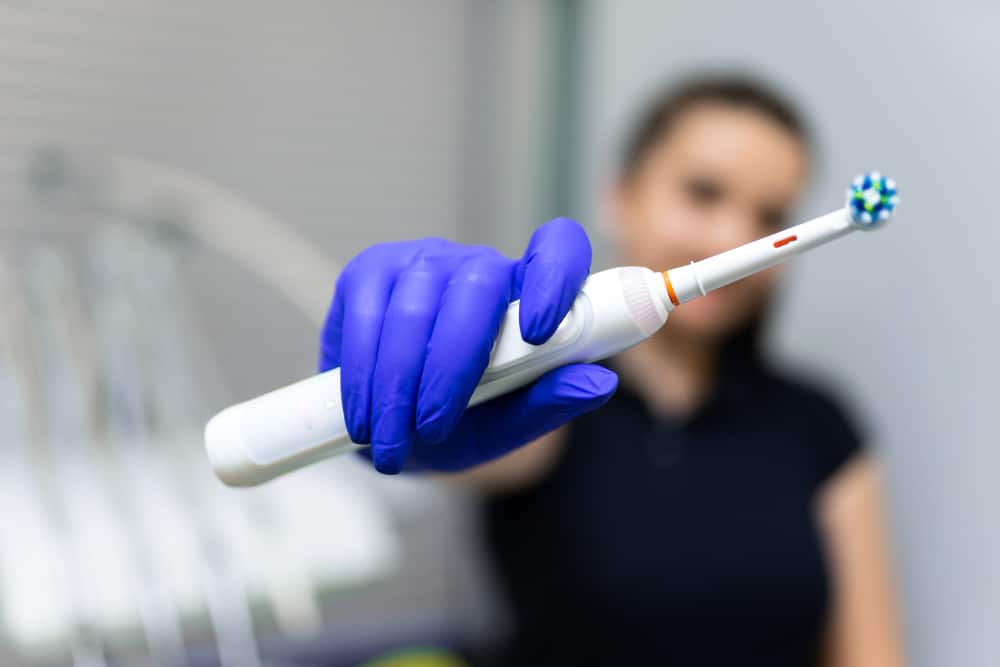Dental plaque is an ever-present substance that we all have on our teeth, but if it is not removed completely, it can harden into tartar and create long-lasting oral health issues. You should see a hygienist at least twice a year for a proper teeth cleaning, but there are several tools that can help manage plaque build-up between visits to the dentist’s office.
Plaque vs. tartar
What is plaque?
One of the questions we hear a lot at DeJesus Dental Group is, “Do I have plaque?” Our answer: Of course you do! Plaque is a sticky, never-ending film that forms on your teeth after eating or drinking. It forms when the natural bacteria in your mouth mixes with sugary and/or starchy foods; if you run your tongue across your teeth and feel a fuzzy substance, that’s plaque.
Be honest: you just checked your teeth for plaque, didn’t you?
Don’t worry—it’s completely natural, and if your heart is beating you will have dental plaque. Oral health problems occur, though, if you can’t get rid of the substance properly.
What is tartar?
When not fully removed by brushing, flossing, or your dental hygienist, plaque hardens to form tartar, a discolored, rough coating on your teeth. It is unsightly in appearance and unpleasant to touch, but its presence has more serious implications.
If tartar gets into your gums—otherwise known as periodontal pockets—and isn’t removed, the early signs of gum disease begin. Many patients visit our Bridgeport and Shelton dental practices, concerned because they have red, swollen or tender gums that easily bleed when flossing or brushing, and we have the unfortunate task of informing them that they have gingivitis, the clinical term for early gum disease.
That’s just the tip of the iceberg, though. If gingivitis is not treated, it can develop into periodontitis, which may cause your gums to pull away from your teeth. Your teeth may loosen, and, in severe cases, fall out of your mouth.
Ways to reduce plaque build-up
This isn’t to scare you, though. Because while there is no known cure for gum disease, there are plenty of simple ways to prevent it, like brushing your teeth for at least two minutes twice a day and flossing regularly. There are also several at-home tools you can use to best manage plaque and tartar.
Use a powered toothbrush
Investing in an electric toothbrush is one way to prevent issues with oral hygiene. A 2020 study compared the use of a manual toothbrush with the use of an oscillating-rotating electric toothbrush, and it found that the latter more efficiently reduced plaque. Electric toothbrushes allow users to clean their teeth in a way that is effective for removing plaque and improving gum health.
While there is not a clear winner in the race to be the best electric toothbrush, some are designed specifically for optimal plaque removal. The Oral-B iO removes up to 100% more plaque along the gum line than a manual toothbrush. Also comes with a pressure sensor to keep the user from brushing too hard and damaging gums, along with a timer to ensure you brush the dentist recommended two minutes, this tool is a great one for fighting plaque buildup.
Use a water flosser
Daily flossing is just as essential for improving oral health, but many still groan at the mere thought of the task. One tool to make flossing more enjoyable—and more effective—is a water flosser.
Waterpik Water Flossers are clinically proven to remove 99.9% of plaque biofilm in three seconds, and a comparison study found it to be 50% more effective in combination with string floss for reducing gingivitis. While several options exist, the Sidekick Water Flosser has a compact and collapsible design, meaning you won’t have to skip flossing while traveling.
Visit a dental hygienist
You should, of course, not rely on at-home remedies to stave off tartar buildup and gum disease. It’s important to schedule a dental cleaning at least two times a year because hygienists use special instruments to remove plaque and tartar from teeth and below the gumline.
DeJesus Dental Group has seen patients for numerous services over the last 25 years, and our practices in Bridgeport and Shelton are both conveniently located. If you’re in need of tartar removal, or if you have any questions regarding your oral health, give us a call or go online to book your dental appointment today.

